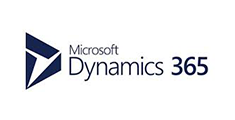Introduction to Data Science in Microsoft Fabric
WebSiteAdmin, September 10, 2024612 Views
As an end-to-end SaaS Microsoft Fabric multiple workloads or components including Data Science. In this blog we will explore how Microsoft Fabric can be used to empower users with end-to-end data science workflows to enrich data and extracts business insights.
What is Data Science?
Data Science has become a popular term and buzzword in many circles today. But what does it mean? Data Science involves using scientific computing, methods, and algorithms to extract knowledge and discern patterns from data. A Data Scientist is the professional who carries out this process.
What are the tasks/process involved in Data Science?
You might be familiar with the typical data science process, as it’s commonly followed in most machine learning projects. At a high level, this process includes the following steps:
- Problem formulation and ideation
- Data discovery and pre-processing
- Experimentation and modeling
- Enrichment and operationalization
- Gaining insights
The problem formulation and ideation phase involve defining the key questions. For instance, how can we predict which movies a user might want to watch next? Or how can we identify spam emails automatically?
To determine if solving the problem is feasible, you first need to explore the data. This involves examining it from different angles, analyzing various factors, and identifying relevant data fields.
Once data discovery and pre-processing are complete, the next step is to create a model that learns from the patterns in the data. This involves an iterative process of training, modeling, evaluating, and refining. This cycle may be repeated multiple times until the model performs satisfactorily. During this step, the model identifies patterns, and these patterns are tested against the data to evaluate their accuracy and the model’s success rate. The cycle continues until an acceptable success rate is achieved.
After the model is operationalized, it is applied to real-world data, which might be stored in a data warehouse or other locations. The resulting data is then prepared for visualization and insights.
The outcome is presented in a user-friendly manner. For example, based on viewing habits, we might recommend movies that a user is likely to enjoy. Or, if an email exhibits certain characteristics, we can flag it as potential spam.
Data Science with Microsoft Fabric: An Integrated Approach
Microsoft Fabric is an end-to-end analytics service that seamlessly incorporates data science capabilities. This platform includes a range of tools, Fabric items, and libraries designed to support every aspect of the data science workflow. Below, we explore the features and functionalities within Microsoft Fabric that facilitate data science, enhancing collaboration and efficiency across different roles.
Key Tools and Fabric Items for Data Science
OneLake and Lakehouse: OneLake, accessed via the Lakehouse item, serves as the central data repository. It connects effortlessly to Notebooks, allowing users to browse and interact with data directly.
Notebook: Notebooks in Microsoft Fabric provide a quick and effective way to start data exploration. They support seamless integration with OneLake, enabling users to read data directly into Pandas dataframes for analysis.
Data Wrangler: Data Wrangler, a tool within the Notebook experience, helps users prepare data and generate Python code. It accelerates routine tasks such as data cleansing and enhances automation and repeatability through code generation.
Power BI: Power BI is integral to Microsoft Fabric, allowing analysts to share reports and datasets with data science practitioners. The collaboration between roles is streamlined, simplifying hand-offs during problem formulation and enhancing data sharing.
Visual Studio Code: For users who prefer a more robust development environment, Visual Studio Code integrates with Microsoft Fabric, offering extensive support for data science projects.
Seamless Data Interaction and Exploration: Microsoft Fabric allows users to interact with data in OneLake using the Lakehouse item, which integrates smoothly with Notebooks for data browsing and interaction. This integration supports seamless data reads from OneLake into Pandas dataframes, facilitating efficient data exploration.
Robust Data Ingestion and Orchestration: The platform provides a comprehensive suite of tools for data ingestion and orchestration pipelines. These tools, natively integrated into Microsoft Fabric, simplify the creation of data pipelines, enabling easy access and transformation of data into machine learning-ready formats.
Scalable Data Preparation and Transformation: Microsoft Fabric empowers users to transform, prepare, and explore data at scale. Utilizing Spark, users can leverage tools such as PySpark/Python, Scala, and SparkR/SparklyR for extensive data pre-processing. The platform also supports powerful open-source visualization libraries to enhance data understanding.
Model Training: Notebooks in Microsoft Fabric can handle machine learning model training using tools like PySpark/Python and SparklyR/R. The platform supports a wide range of popular machine learning libraries, including Scikit-Learn, for comprehensive model development.
Experiment Tracking with MLflow: Microsoft Fabric integrates MLflow to track machine learning experiments and runs. Users can log experiments and manage models within the platform, leveraging the built-in MLflow experience.
SynapseML for Scalable ML Pipelines: SynapseML, an open-source library maintained by Microsoft, simplifies the creation of scalable machine learning pipelines. It expands the Apache Spark framework, unifying various ML frameworks and Microsoft algorithms into a single, scalable API. SynapseML includes tools for developing predictive models and leveraging pre-trained AI models from Azure AI services.
Batch Scoring and Operationalization: Notebooks can perform machine learning model batch scoring using open-source libraries or Microsoft Fabric’s scalable Spark Predict function. Predicted values can be written to OneLake and seamlessly consumed from Power BI reports using the Power BI Direct Lake mode. This integration facilitates easy sharing of results with stakeholders and simplifies the operationalization of machine learning models.
Scheduling and Automation: Batch scoring can be scheduled using Notebook scheduling capabilities or incorporated into data pipeline activities or Spark jobs. Power BI, using the Direct Lake mode, automatically updates with the latest predictions, eliminating the need for manual data refreshes.
Conclusion
Microsoft Fabric provides a powerful, integrated environment for data science, supporting everything from data exploration and preparation to model training and operationalization. By fostering seamless collaboration between data science practitioners, business users, and analysts, Microsoft Fabric enhances efficiency and drives innovation in data science projects.












